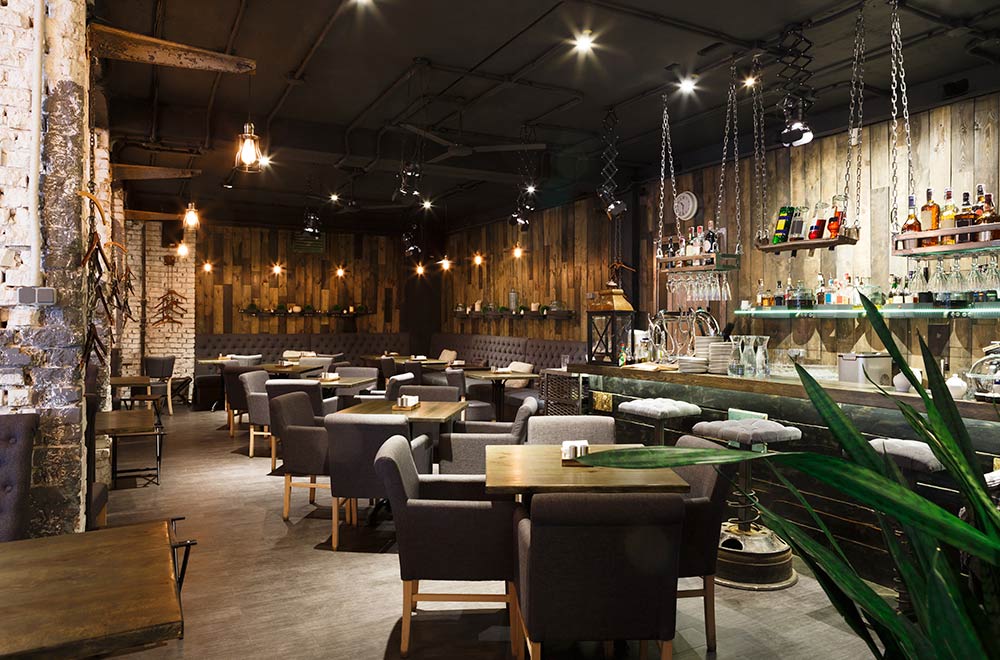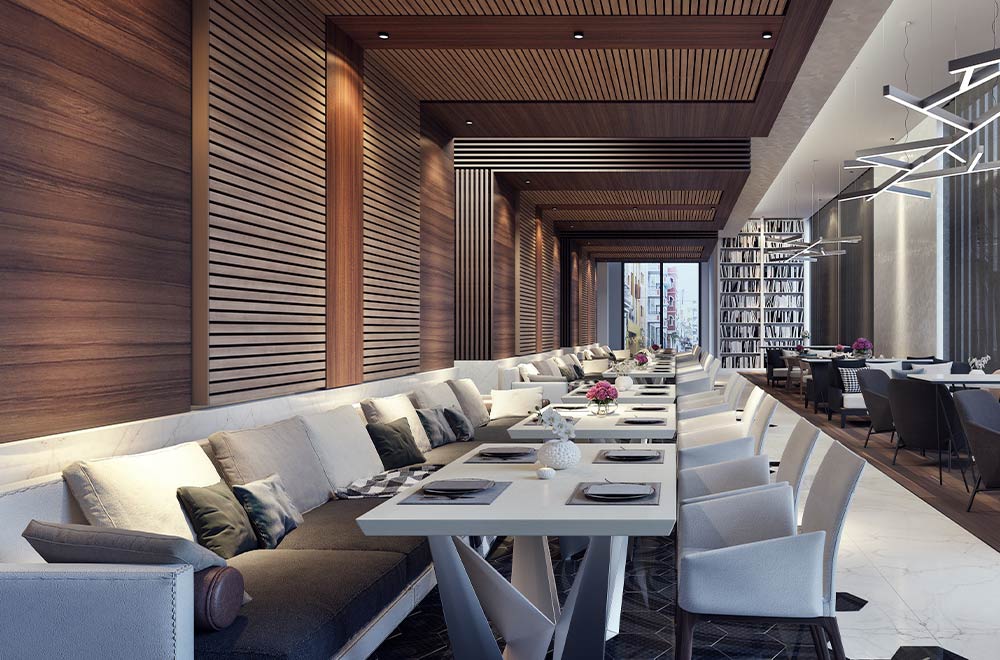Fine Dining Experience Islamabad: Delight In Elegant Cooking Delights
Fine Dining Experience Islamabad: Delight In Elegant Cooking Delights
Blog Article
Savor Genuine Oriental Food With a Pan-Asian Twist for a Culinary Journey
Getting started on a culinary journey through genuine Oriental cuisine, boosted with a Pan-Asian spin, provides a distinct opportunity to discover the abundant tapestry of flavors that specify the region's diverse cooking practices. As you contemplate these enticing dishes, consider the social stories and historical influences that shape them, each bite offering a tale waiting to be found. Chinese food Islamabad.

Exploring Pan-Asian Flavors
In the world of global gastronomy, Pan-Asian food stands apart for its remarkable variety and the unified interaction of flavors from different Eastern cultures. This cooking method commemorates the abundant traditions and one-of-a-kind active ingredients located across the continent, creating a tapestry of tastes that is both appealing and satisfying. Key to Pan-Asian cuisine is its capacity to balance contrasting flavors-- wonderful, salted, spicy, and sour-- while highlighting the freshness and high quality of each component.
From the umami-rich soy sauce of Japan to the intense chili peppers of Thailand, Pan-Asian cuisine provides an extensive palette of flavors. These aspects are usually combined in innovative means, boosting dishes with layers of complexity. As an example, using aromatic natural herbs such as lemongrass and cilantro, typical in Vietnamese and Thai food, includes a revitalizing brightness to dishes, while the unification of coconut milk supplies a velvety, rich structure.
The focus on fresh fruit and vegetables and fragrant spices makes sure that each dish is not just a banquet for the taste buds yet additionally for the detects. Pan-Asian food welcomes diners to start a cooking journey, checking out the huge and varied landscapes of Oriental gastronomy with every bite.
Combination Dishes to Try
While Pan-Asian cuisine is commemorated for its conventional tastes, the contemporary cooking landscape is progressively welcoming combination recipes that blend these classic components with impacts from other areas. This innovative technique not only honors the abundant heritage of Eastern culinary arts yet also presents unique taste experiences that interest contemporary tastes.
An archetype of such a combination dish is the Korean-Mexican taco, where marinaded bulgogi beef is covered in a warm tortilla, covered with kimchi and a zesty gochujang-infused salsa. This combination marries the strong, savory flavors of Korea with the vibrant, fresh aspects of Mexican food. In a similar way, sushi burritos have gotten popularity, integrating the delicate creativity of Japanese sushi with the passionate, hand-held convenience of a burrito, usually featuring combination active ingredients like tempura shrimp and avocado with a drizzle of wasabi mayo.
Another noteworthy dish is Thai curry ramen, which infuses the luscious, fragrant seasonings of Thai curry right into the comforting broth of standard Japanese ramen, developing an unified mix that tantalizes the senses. These fusion meals prolong past plain uniqueness; they stand for a cooking dialogue between cultures, motivating exploration and technology in the globe of Pan-Asian food.
Important Ingredients and Flavors
To absolutely value Pan-Asian food, one need to recognize the important ingredients and spices that create its structure. This diverse cooking design draws from an abundant tapestry of Oriental traditions, using a harmonious blend of textures and tastes.
Aromatic elements are crucial, with ginger, garlic, and lemongrass being ubiquitous throughout different Pan-Asian recipes. These ingredients give a great smelling base that improves the complexity of flavors. Flavors such as star anise, cardamom, and cinnamon present heat and character, resembling influences from areas like China and India.

Cooking Methods and Tips
Grasping the art of Pan-Asian cuisine calls for experience with its distinctive food preparation strategies, each adding to the vibrant tapestry of flavors this cooking practice is celebrated for. Central to these techniques is the stir-fry, a fast food preparation strategy that preserves the nutritional stability and dazzling shades of ingredients. Utilizing a wok, the stir-fry method allows for even heat distribution, necessary for attaining the particular structure and taste equilibrium of hokkaido sushi Pan-Asian meals.
One more essential method is steaming, especially common in Chinese food. This gentle method maintains the natural flavors and nutrients of ingredients, making it ideal for seafood and veggies. Dumplings, a precious staple, often take advantage of steaming, causing soft, delicious appearances.
Grilling, also essential, presents smoky depths to meals such as Korean bulgogi or Japanese yakitori (Fine dining experience Islamabad). This strategy commonly includes marinating active ingredients, enabling flavors to pass through deeply prior to cooking over an open fire or warmer
Finally, grasping the art of balancing tastes-- wonderful, sour, salty, bitter, and umami-- is critical. Appropriately layering these aspects can boost a meal from regular to extraordinary, using a complex and pleasing culinary experience that personifies the essence of Pan-Asian food.
Dining Experiences Worldwide
Around the world, Pan-Asian food provides an unequaled dining experience, commemorated for its rich tapestry of tastes their website and dynamic discussions. This cooking phenomenon has actually transcended social limits, recording the hearts and tastes buds of food enthusiasts worldwide. In worldwide cities like New York, London, and Sydney, Pan-Asian dining establishments offer as melting pots where cooking traditions from Thailand, Japan, China, and beyond merge, providing diners with a diverse mix of dishes that highlight the region's variety.
The global appeal of Pan-Asian cuisine hinges on its capability to use both authenticity and technology. Cooks masterfully marry traditional active ingredients such as lemongrass, soy sauce, and miso with contemporary strategies, resulting in dishes that are both familiar and refreshingly new. This combination enables diners to embark on a culinary journey that respects heritage while embracing modernity.
Furthermore, dining experiences are elevated through thoughtfully designed settings that mirror the principles of Pan-Asian looks. From minimal Japanese-inspired interiors to lively Thai-themed areas, each restaurant provides a distinct ambiance that complements the culinary offerings. As a result, clients are not merely consuming a dish yet partaking in a social experience, making Pan-Asian eating a genuinely worldwide phenomenon.
Final Thought
The expedition of Pan-Asian cuisine uses a best lunch near me profound understanding of the intricate interaction of flavors and culinary practices throughout Asia. By accepting fusion dishes such as Thai curry ramen and sushi burritos, the cooking trip not only highlights the flexibility of typical components however also showcases cutting-edge contemporary techniques. This gastronomic journey, enhanced by important seasonings and cooking techniques, provides an unique possibility to appreciate the cultural diversity and culinary virtuosity that specify Pan-Asian food on a global scale.
Embarking on a cooking trip via authentic Eastern cuisine, boosted with a Pan-Asian twist, supplies a distinct opportunity to check out the rich tapestry of tastes that define the area's varied culinary practices.In the realm of worldwide gastronomy, Pan-Asian food stands out for its remarkable variety and the unified interplay of tastes from different Asian societies. Trick to Pan-Asian food is its ability to stabilize different tastes-- sweet, salted, spicy, and sour-- while highlighting the freshness and quality of each ingredient.

Report this page